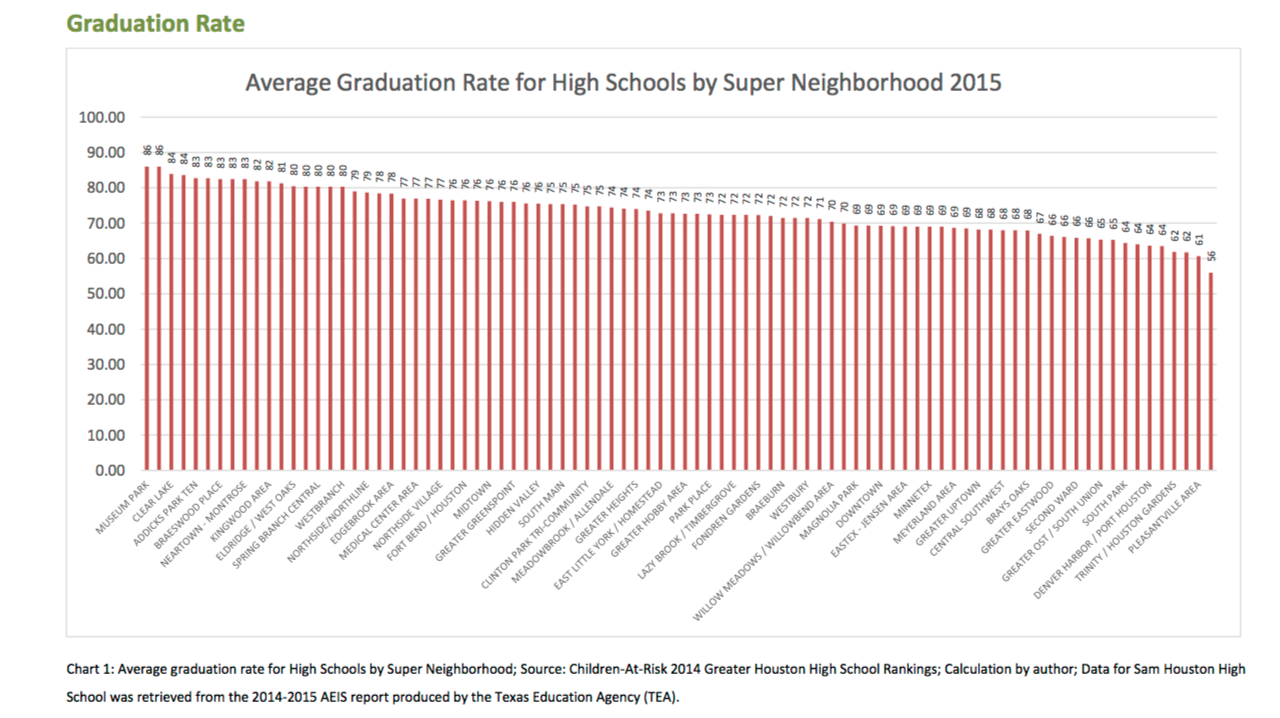The Houston Independent School District, the largest in Texas, calls itself a "district of choice," offering families a host of magnet programs and the option, in some cases, for students to attend schools different than the ones they're zoned to.
It's all an effort to help families "choose the school that best meets their child’s academic needs and interests," according to the district's website.
But a new report from Rice University challenges the idea that HISD is truly a "district of choice."
"We are bound by geography," said Lester King, researcher with the Shell Center for Sustainability's Houston Sustainability Indicators Project at Rice University. His latest report, Sustainable Communities and Public Education, looks at the connection between housing prices and school performance across school districts in Houston, what King calls "the missing component of the affordability equation."
In Houston, about 20 percent more students attend private school than public school, according to King.
But even within public schools, there's a divide between the haves and have nots.
Graduation rates for schools in the Pleasantville Area, a neighborhood in northeast Houston, are around 56 percent, compared to a graduation rate of 86 percent in Museum Park, north of Hermann Park, for example.
King then compared median housing values neighborhood and found a similar breakdown: Pleasantville Area had the fourth-lowest housing values, and Museum Park had the fifth-highest.
To figure out which factors were most closely associated with higher-performing schools, King looked at a variety of variables in each neighborhood, including median income; race and ethnicity; poverty rates; educational attainment; distance to parks, transit and the central business district; transit use, land usage, population living inside the flood zone and more.
What he discovered -- somewhat unsurprisingly -- was that with greater income, a higher percentage of white residents, and a larger number of white students came higher graduation rates in the area's public schools.
The findings suggest that, at the very least, the most successful schools are located in the wealthiest and whitest neighborhoods, challenging the idea that good schools are equally accessible to white students as they are to black and Hispanic students.
Even in a "district of choice," King notes, geography still matters. The logistics of navigating the school choice system and attending a high-performing school -- including the hurdle of arranging transportation, and the time involved in evaluating and applying to schools -- can be prohibitively burdensome to families in poor neighborhoods with lower-performing schools, said King. For parents facing those challenges, he said, often "you're going to send your kids to the neighborhood school."
The finding supports other research in the district, including a 2015 Houston Education Research Consortium report based on interviews with wealthy parents about how they selected schools for their children.
That research revealed that "poor minority students have come to represent a sort of collective code for failing, low-quality schools as well as impoverished and dangerous neighborhoods." As a result, the report argued, "school choice is at risk of becoming an ineffective response to educational inequality."




